

101 Gardening Secrets The Experts Never Tell You. I like to use natural top soil to start my garden seedlings in.
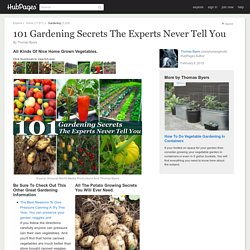
I usually don't use potting soil because it generally does not produce the results I want. I usually fill a large, deep baking pan I have with top soil and bake it for thirty minutes at 350 degrees. This sanitizes the soil and makes sure that no weeds or grass come up in your soil. I usually start on this project in the winter and I fill up a couple of large plastic barrels with lids with the sanitized soil.
The Legendary Herb of Life. Nature’s best way of providing High Protein — 22% to 33% Vitamins A, C, B-12 * Very Drought Resistant!
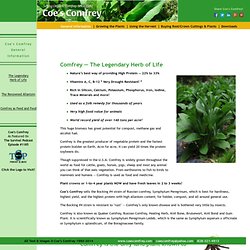
* Rich in Silicon, Calcium, Potassium, Phosphorus, Iron, Iodine, Trace Minerals and more! Modernize Your Garden With Bamboo. Bamboo is a great choice for specimen planting or for screening, and it can be easy to grow if you know how to manage it.
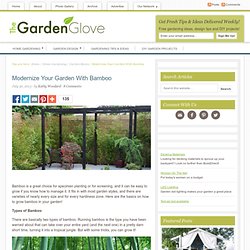
It fits in with most garden styles, and there are varieties of nearly every size and for every hardiness zone. Here are the basics on how to grow bamboo in your garden! Types of Bamboo There are basically two types of bamboo. Running bamboo is the type you have been warned about that can take over your entire yard (and the next one) in a pretty darn short time, turning it into a tropical jungle. 17 Foods To Buy Once And Regrow Forever. Everyday we throw heaps of leftovers and scraps out which could actually be used to regrow fruits, vegetables and herbs completely free of charge.
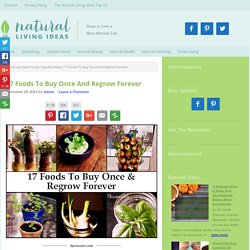
Not only can we save money, but also reduce our carbon footprint. With grocery prices increasing, now is the best time to get frugal in the kitchen and garden. A Crop-by-Crop Guide to Growing Organic Vegetables and Fruits: Our Complete Crops at a Glance Guide - Organic Gardening. How to stratify seeds - How to stratify seeds - Seeds - How to.
Trick seeds into germinating by giving them the cold treatment.

Illustrations by Shannon Hong Seeds from plants native to temperate zones possess a remarkable survival mechanism: they require a cold period to germinate, a tactic that occurs naturally in the garden during our winters. This makes evolutionary sense; otherwise, fresh seed would germinate in the autumn, and the young seedlings would succumb to icy blasts. By imitating nature, gardeners can get a jump-start on the season at any time of the year by artificially chilling seeds—a process known as stratification. Seed Savers Exchange - 2014 Seed Savers Catalog. How To Save Your Own Seed at Home. Seed-saving is easy.

You'll get better seed than you can buy, even from us. And you can keep your own varieties going for future years. But .. . just as with growing the plants, there are a few key bits of information you need to know to keep varieties pure. It's not hard, you just need to know how to do it. One key thing before you start - you can't save seed from F1 (hybrid) varieties. Later, do remember to dry your seed properly, or it will not survive storage. Companion Planting Guide. Edible Plants to Grow Indoors.
From farmers’ markets and Community Supported Agriculture, to urban farms and rooftop gardens, to produce delivery services, more and more people across the U.S. are embracing farm-fresh food.

Insect Repellent Plants. Six insect repellent plants to grow – includes plants that repel biting insects such as: mosquitoes, gnats, ticks & fleas; and plants that protect other plants from aphids & mites etc.
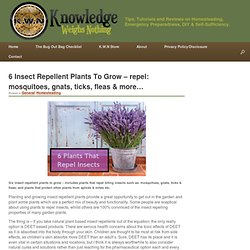
Planting and growing insect repellent plants provide a great opportunity to get out in the garden and plant some plants which are a perfect mix of beauty and functionality. Some people are sceptical about using plants to repel insects, whilst others are 100% convinced of the insect repelling properties of many garden plants. The thing is – if you take natural plant based insect repellents out of the equation; the only really option is DEET based products. There are serious health concerns about the toxic effects of DEET as it is absorbed into the body through your skin. Children are thought to be most at risk from side effects, as children’s skin absorbs more DEET than an adult’s. Feverfew is great for repelling mosquitoes and other flying biting insects. (Photo from: Wikimedia Commons) Crop Rotation Guide. Crop rotation is a simple procedure that involves not planting the same crop in the same soil for a period of years.
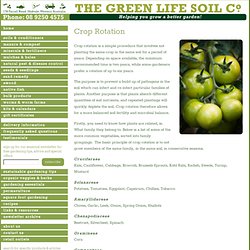
Depending on space available, the minimum recommended time is two years, while some gardeners prefer a rotation of up to six years. The purpose is to prevent a build up of pathogens in the soil which can infect and re-infect particular families of plants. Another purpose is that plants absorb different quantities of soil nutrients, and repeated plantings will quickly deplete the soil. No-till Gardening. Gardeners traditionally dig, or turn over the top layer of soil before planting to get rid of weeds, and make it easier to use fertilizers and to plant crops.

This also speeds up the decomposition of crop residue, weeds and other organic matter. Tilling the soil is often the most strenuous of a gardener’s tasks. Companion Planting. When to Plant Guide. Home | Vegetables and herbs to plant | Climate zones | About Gardenate | Contact us This planting guide is a general reference intended for home gardeners. We recommend that you take into account your local conditions in making planting decisions.
Gardenate is not a farming or commercial advisory service. For specific advice, please contact your local plant suppliers, gardening groups, or agricultural department. The information on this site is presented in good faith, but we take no responsibility as to the accuracy of the information provided.